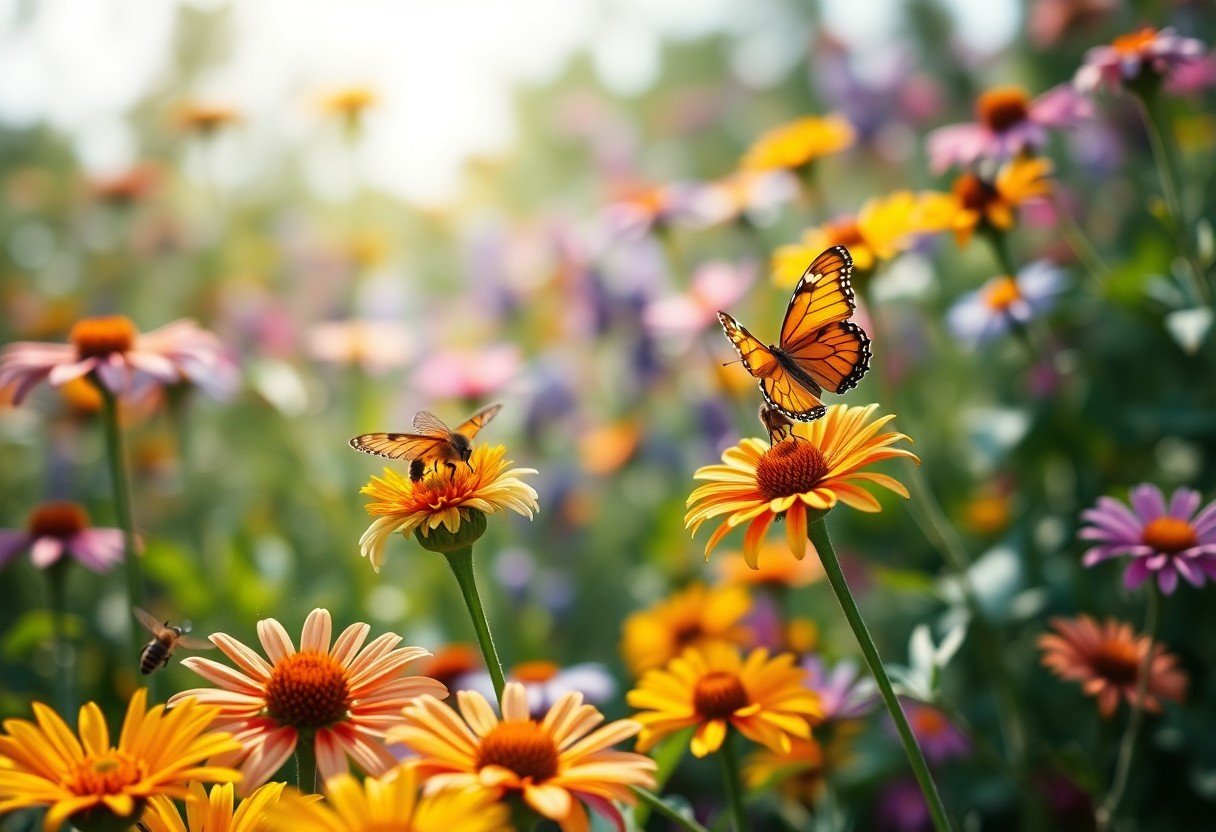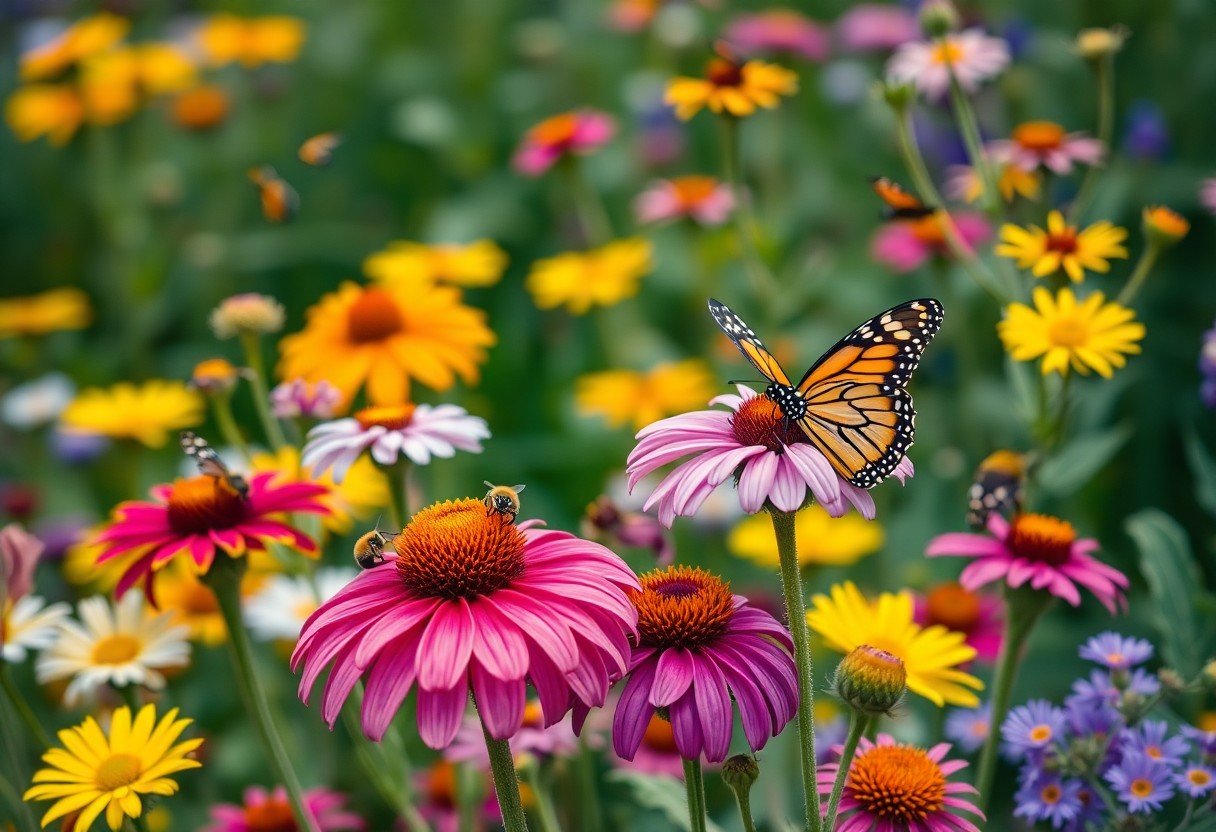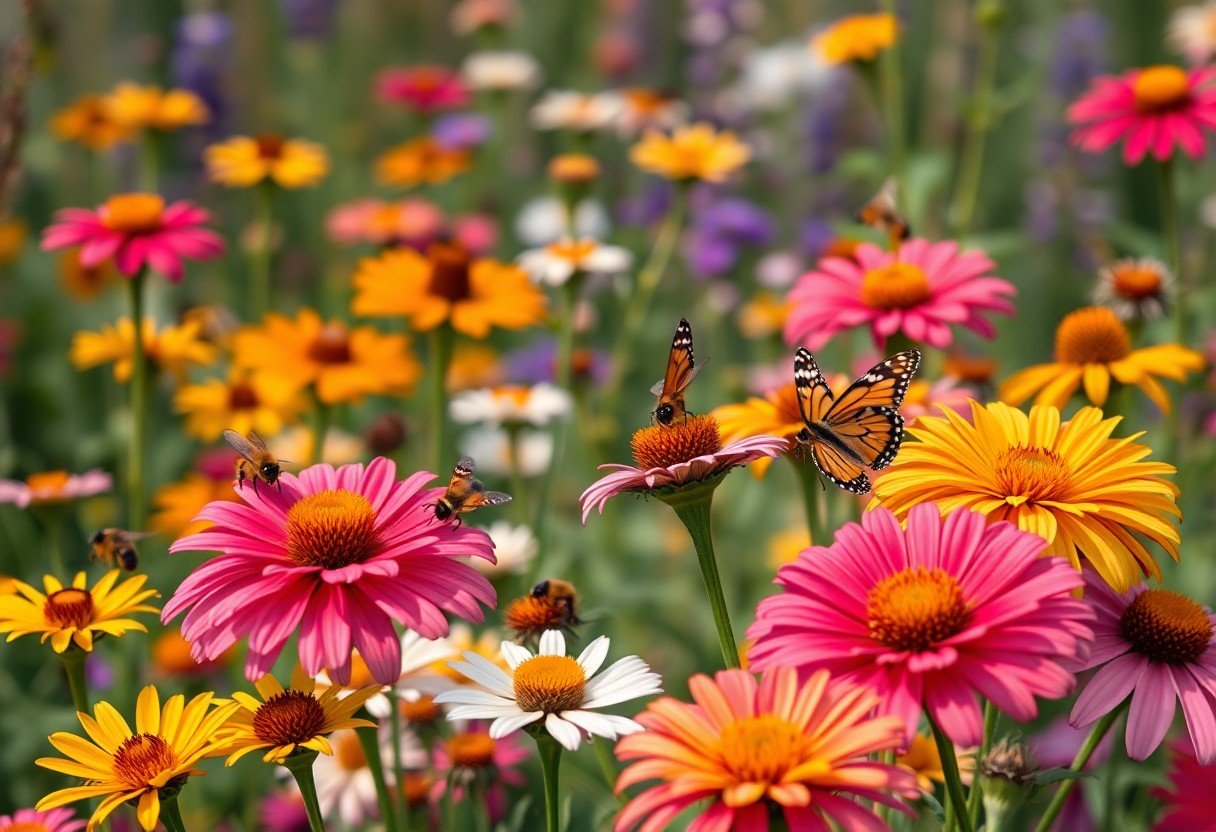You can create a haven for bees and butterflies by planning a pollinator garden, and with a few simple steps, you’ll be on your way to attracting these beneficial insects to your yard. Your garden will not only be a beautiful addition to your outdoor space, but it will also provide a vital source of food and shelter for these important pollinators. By following the tips outlined in this post, you’ll learn how to design a thriving pollinator garden that will flourish.
Choosing the Right Location
The location of your pollinator garden is necessary for its success. You will want to choose a spot that provides the right conditions for your plants to thrive and attract bees and butterflies.
Assessing Sunlight and Soil Conditions
Although understanding the specific needs of the plants you want to include in your garden is vital, you should also consider the overall sunlight and soil conditions of your yard. You can then select plants that fit these conditions, ensuring your garden flourishes.
Selecting a Spot with Adequate Water Supply
There’s no doubt that access to water is necessary for the health of your plants. You should choose a location with a convenient water source, such as a hose or a rain barrel, to make maintaining your garden easier.
A well-designed irrigation system or a nearby water source will help you keep your pollinator garden healthy and thriving. You can also consider collecting rainwater to reduce your water consumption and create a more sustainable garden, which will attract more bees and butterflies to your yard.
Understanding Pollinator Needs
If you’re planning a pollinator garden, it’s vital to consider the needs of bees and butterflies. You can find valuable information on How can I attract pollinators to my garden? What am I doing wrong? to create a welcoming space for these beneficial insects.
Identifying Key Plants for Bees and Butterflies
You will need to focus on plants that provide nectar and pollen, such as flowers, shrubs, and trees, to attract pollinators to your garden. Choose a variety of plants that cater to different species of bees and butterflies.
Learning About Seasonal Bloom Variation
On average, a pollinator garden should have a mix of plants that bloom at different times to provide a constant source of food for pollinators throughout the growing season. This ensures that your garden remains attractive to bees and butterflies.
To achieve a diverse and thriving pollinator garden, consider the bloom times of various plants and aim to have something in bloom from early spring to late fall. This will provide a constant source of nectar and pollen for pollinators, supporting their health and well-being throughout the growing season.
Planning Your Garden
Assuming you want to create a pollinator-friendly garden, start by researching the best practices. You can visit Draw Pollinators Like Bees, Birds & Butterflies to Your Garden to learn more about attracting these beneficial insects and animals to your outdoor space.
Creating a Diverse and Layered Garden Design
Now that you have a good understanding of the basics, consider designing a garden with a variety of plants and layers to provide habitat for different types of pollinators, allowing you to create a unique and thriving ecosystem in your yard.
Incorporating Native Plants and Flowers
Flowers that are native to your region are an excellent choice for your pollinator garden, as they will naturally attract the local bee and butterfly populations, making your garden a haven for these beneficial insects.
Understanding the specific needs of native plants and flowers is key to creating a successful pollinator garden. You can choose plants that provide nectar, pollen, and host plants for caterpillars, allowing you to support the entire life cycle of these important pollinators and create a thriving ecosystem in your yard. By incorporating native plants and flowers, you will be able to attract a diverse range of pollinators to your garden.
Essential Tips for a Thriving Pollinator Garden
Not all gardens are created equal when it comes to attracting pollinators. Consider the following:
- Choose a sunny location
- Use native plants
- soil type
- moisture levels
- sun exposure
Knowing these tips will help your garden thrive and become a haven for bees and butterflies.
How to Choose the Right Gardening Tools and Materials
The same principles that guide your plant selection should also guide your choice of gardening tools and materials, ensuring they are safe for your pollinators.
Maintaining a Chemical-Free Environment
Clearly, one of the most important decisions you will make as a pollinator gardener is to avoid using chemicals in your garden, which can harm or kill your pollinators.
Right from the start, you should focus on creating a balanced ecosystem in your garden, where you use natural methods to control pests and diseases, such as introducing beneficial insects or using physical barriers, allowing you to maintain a chemical-free environment that is safe for your pollinators to thrive in, and your efforts will be rewarded with a vibrant and healthy garden.
Managing Pests and Diseases
Unlike other gardens, a pollinator garden requires careful management of pests and diseases to ensure the health and well-being of your plants and the pollinators they attract. You will need to balance the need to control pests and diseases with the need to protect your pollinators.
Natural Methods for Controlling Pests
For instance, you can use natural methods such as introducing beneficial insects or using physical barriers to control pests in your garden, which will help minimize harm to your pollinators. You can also use organic pest control methods, such as neem oil or insecticidal soap, to control pests.
Preventing the Spread of Diseases in Your Garden
One way to prevent the spread of diseases in your garden is to ensure good air circulation and remove any infected plants, which will help prevent the spread of disease to other plants. You should also avoid overwatering, which can contribute to the development of disease.
Pests and diseases can quickly spread in your garden if you do not take steps to prevent them, so you will need to be vigilant and take action quickly if you notice any problems. You can prevent the spread of diseases by disposing of infected plant material and disinfecting your tools, which will help keep your garden healthy and thriving.
Factors to Consider for Long-Term Success
For a thriving pollinator garden, you should consider several factors. Key considerations include:
Any of these factors can impact the overall health and attractiveness of your garden to pollinators.
Climate Considerations and Garden Maintenance
On the topic of long-term success, you’ll need to consider your local climate and how it affects your garden’s maintenance needs. You should think about how much rainfall your area receives and how often you’ll need to water your plants.
Adapting to Seasonal Changes and Weather Conditions
One of the most significant challenges you’ll face is adapting your garden to seasonal changes and weather conditions. You’ll need to select plants that can thrive in a variety of conditions, from hot summers to cold winters.
It is imperative to choose a mix of plants that will provide a constant source of nectar and pollen throughout the growing season, taking into account the specific needs of different pollinators, such as bees and butterflies, and selecting plants that are native to your region, as they will be more attractive to local pollinators and better suited to your climate.
Final Words
To wrap up, you now have the knowledge to create a pollinator garden that attracts bees and butterflies. You can enhance your garden’s appeal by incorporating a variety of plants. For more information, visit Planting a Pollinator Garden: A Quick Start Guide to learn how to make your garden a haven for these beneficial insects, and enjoy the beauty and benefits of your thriving pollinator garden.



